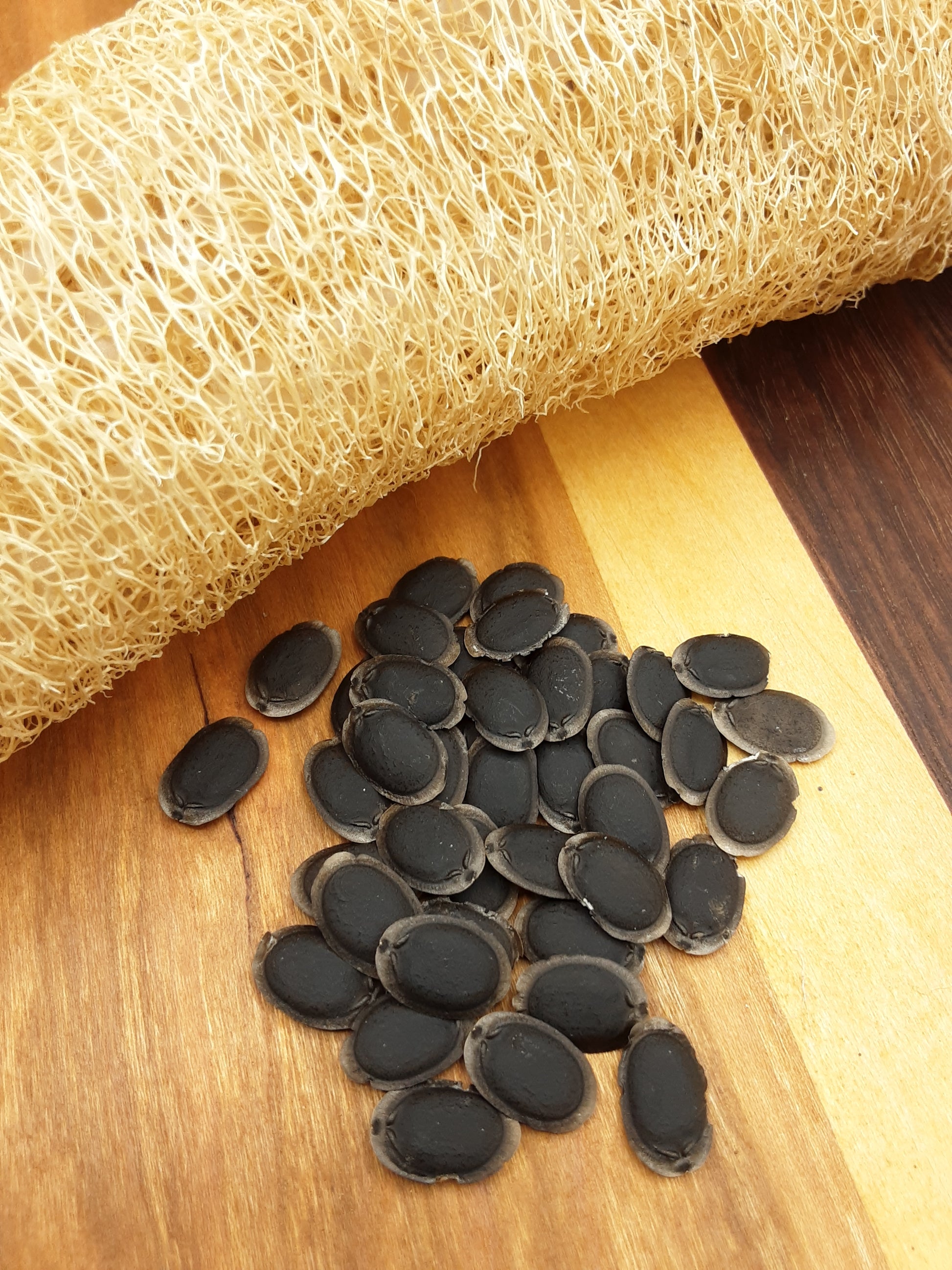Great Lakes Staple Seeds
Luffa
Luffa
Couldn't load pickup availability
(Luffa spp. - L. acutangula, L. cylindrica); aka Sponge Gourd, Dishrag Gourd; Minimum 20 seeds
What a fun crop to grow! Luffa fruits are known for their intricate fibrous insides that when allowed to mature and dry, form natural scrubbies. The vines are a bit rambunctious but trellis well requiring strong support. I grow luffa as transplants, starting them inside in mid-May with the other warm season viners, planting outside when the soil temperature is consistently above 70º F.
I've heard tell you can eat luffa fruits when they are young, 6 inches or less, but I wanted to maximize mature fruit harvest this season so I resisted - perhaps in 2021.
For the most part, luffa grows itself, with little attention from us, other than perhaps to re-position an errant vine.
Oh no! Why are there so many ants on the luffa vines and why do the leaves have so many dark spots on them? Don't panic! Luffas are one of the over 2000 plant species that makes use of extrafloral nectaries (EFNs) as a mutualistic defense mechanism. EFNs are glands on plant parts other than the flower that secrete nectar to attract predatory partners, particularly ants. In return for the plant providing a sweet treat, the ants protect the luffa vines from plant eating insects. Pretty neat!
For making sponges, I leave the gourds on the vine until the last possible hard frost night. They are then moved to a warm, dry, well ventilated location to cure. Once the gourd's skin is dry, it peels away to reveal the natural internal sponge. I cut each into segments and use a chopstick to poke out the seeds. Don't forget to save some seeds to plant!















